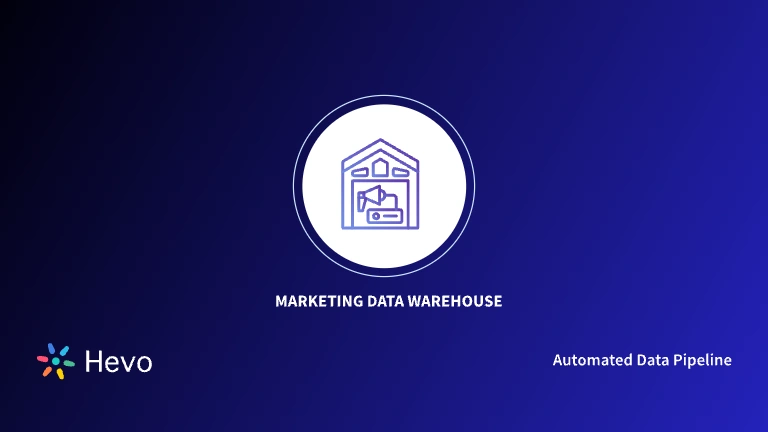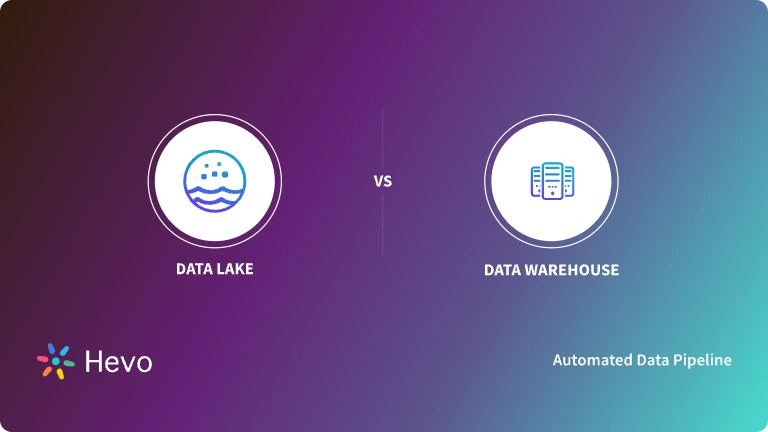1GB of data was referred to as big data in 1999. Nowadays, the term is used for petabytes or even exabytes of data (1024 Petabytes), close to trillions of records from billions of people. In this fast-moving landscape, the key to making a difference is picking up the correct data storage solution for your business.
Common solutions to store data are databases, data warehouses, and data lakes. Each of these has a specific purpose, and knowing their essential features and how they differ can help you make a wise choice regarding your data architecture. In this blog post, let’s make a detailed comparison between data lake vs data warehouse vs database.
Table of Contents
Database Overview
A database consists of rows and columns that store data electronically. These tables are generally used in transaction processing for retail and banking services. Databases store structured data. Data is inserted in tables and set up so that it can be accessed easily. Databases are designed to insert, update, and delete data with ease.
Characteristics of Databases
- Databases store data in an organized way, usually in the form of tables.
- They allow easy and quick data manipulation, i.e., add, modify, or delete data.
- Databases require a query language to interact and manipulate data. One such famous query language is SQL.
- They store structured data only with a pre-defined schema and cannot store other data types, such as multimedia files, JSON, etc.
Database Service Examples
Some of the popular database services are:
- MySQL: MySQL is an open-source relational database that runs and stores data via SQL queries and follows a structured relational database schema for organizing information.
- Microsoft SQL Server: This database is more prevalent in the management of structured data in the business context.
- Oracle Database: Oracle Database is an all-in-one database for enterprise needs.
Struggling to migrate your data? Hevo makes it a breeze with its user-friendly, no-code platform. Here’s how we simplify the process:
- Seamlessly pull data from HubSpot and over 150+ other sources with ease.
- Utilize drag-and-drop and custom Python script features to transform your data.
- Efficiently migrate data to a data warehouse, ensuring it’s ready for insightful analysis in Tableau.
Hevo is the all-in-one solution for optimizing your data integration needs, regardless of whether you use a database, data warehouse, or data lake.
Get Started with Hevo for FreeData Warehouse Overview
Data warehouses are a form of data management system responsible for pulling data from many sources into one central repository. They are highly employed in business intelligence and analytics due to their ability to make both current and historical data available in one location. Traditionally, data warehouses were on-premise, but recently, most have shifted to the cloud, where they are easy to access, and scaling has become economical.
Characteristics of Data Warehouses
- A key characteristic of a data warehouse is it stores integrated data that allows for easy access and analysis.
- Data warehouses store historical data, which makes them useful for trend analysis.
- They are optimized for analytics and are built to process complex queries swiftly.
- Also, data warehouses store structured data from multiple sources on a larger scale.
Data Warehouse Service Examples
A variety of data warehouse services are available. The most popular ones are :
- AWS Redshift: Redshift is Amazon’s highly scalable data warehouse service, preferred by users who already use other AWS services.
- Snowflake: Snowflake is a cloud data warehouse service that enables data storage, processing, and analytics. It is easy to use and highly flexible.
- Google BigQuery: BigQuery is Google’s take on data warehouse. BigQuery supports all data types and has built-in machine learning and business intelligence capabilities.
Data Lake Overview
A data lake is a data management system designed specifically for storing all types of data,i.e., structured, semi-structured, and unstructured data. Unlike traditional systems that require detailed database schema design, it can store large amounts of data in its native format and process it to derive business reports. Data storage in a data lake does not require a pre-defined schema.
Characteristics of Data Lakes
- Data lakes store data in their unprocessed raw form, which makes the data flexible for multiple use cases.
- It supports structured, semi-structured, and unstructured data; everything from tables to multimedia files can be stored in a data lake.
- Data lakes are cost-efficient solutions for storing large amounts of data.
- They are highly scalable, storing petabytes of data with ease.
Data Lake Service Examples
- Amazon S3: AWS S3 is a widely used data lake solution known for its scalability.
- Google Cloud Storage: Google Cloud storage is another highly scalable storage option for big data analytics applications.
- Microsoft Azure Data Lake Storage: It is a highly scalable and secure data lake offered by Microsoft for handling all types of data.
Head-on Comparison – Database vs Data Warehouse vs Data Lake
| Factors | Database | Data Warehouse | Data Lake |
| Data Type | Structured data (e.g., tables with rows and columns). | Structured data from various sources (Cleaned data via ETL) | All data types: structured, semi-structured, and unstructured. |
| Purpose | Transactional processing for real-time operation. | Analytics and reporting by processing historical data. | Storing raw, unstructured, semi-structured data for analysis. |
| Use Case | Used in banking systems to manage customer transactions and customer relationship management (CRM) applications. | Business intelligence (BI) for reporting, trend analysis, and decision-making.Financial forecasting based on historical data. | Machine learning model training and big data analytics.Also in Media and entertainment |
| Data Processing | OLTP(Online Transactional Processing) | OLAP (Online Analytical Processing) | Batch processing: data is stored in its raw form and processed when needed for analytics |
| Cost | Moderate; costs vary based on the size of the database | Higher costs due to the need for powerful computing resources | Low for storage, which may increase based on computing needs |
| Latency | Low, real-time queries for immediate response. | Moderate to high; | High; raw data needs to be processed before use. |
| Scalability | Limited scalability | High scalability | Extremely scalable, designed to handle petabytes of data |
| Users | Developers, operational teams, and administrators who need real-time data access. | Data analysts, business analysts, and data scientists focused on insights and reporting. | Data scientists, engineers, and analysts who require access to large datasets |
| Famous Services | MySQL, PostgreSQL, Oracle DB | Snowflake, Amazon Redshift | Amazon S3, Azure Data Lake |
Database vs Data Warehouse vs Data Lake – Detailed Overview
When choosing between a database vs data warehouse vs data lake, you need to consider several factors:
- Purpose: The most essential factor to consider is the purpose of using a data management system. Each of these systems is optimized for different purposes. For, let’s say, day-to-day operations and updations, databases are an optimal choice. Your go-to choice for analytics and report creation should be a data warehouse. And if you only need a large storage repository for all types of data, you should choose a data lake.
- Data Type: If you generally deal with only structured data, a database or data warehouse is the best choice. For unstructured or semi-structured data, a data lake is a better choice.
- Scalability: Of the three, a data lake offers the best scalability, with the ability to handle petabytes of data. Databases are designed for smaller datasets. Data warehouses are more scalable than databases but less than data lakes.
- Schema Flexibility: If the data you want to store has a rigid schema, you might want to choose a database or data warehouse, whereas if there is no defined schema, a data lake can be chosen.
- No. of Sources: If your organization wants to store and analyze its data from multiple sources, it would have to choose a data warehouse, a data lake, or both. If there is only one source, a database can be used.
When to Use a Database, Data Warehouse, or Data Lake?
When to Use a Database:
Databases are the ideal choice for managing daily operations that require frequent reads and writes to the database. They are suitable for transactional systems such as banking, retail, and CRM. Databases are excellent for managing structured data for smaller datasets. They are suitable for simple queries.
When to Use a Data Warehouse:
Data warehouses are designed especially for analyzing large volumes of data from multiple sources. They should also be used if the analysis requires historical data to generate reports. Data warehouses are the best choice for cross-departmental data insights and large-scale analytics. They are ideally suited for business intelligence and trend analytics.
When to Use a Data Lake:
Data lakes are used to store data in various formats, such as structured, semi-structured, and unstructured. You should also choose a data lake if your organization deals with petabytes of data from IoT devices, social media, or other sources. It is a cost-effective solution to store extensive unprocessed raw data.
To dive deeper into modern data architectures, check out our guide on Data Mesh vs Data Warehouse and choose the right approach for your needs.
Curious about the following questions? Check out our blogs below:
- How do you build a data warehouse?
- What is the need for a data warehouse?
- What are the costs associated with a data warehouse?
- What are the best practices for using a data warehouse?
Conclusion
Choosing between a data lake vs data warehouse vs database is not that tricky. One needs to select the storage option that meets the organization’s specific needs. You would use a database to handle current transactions, a data warehouse to handle analytics and report-making, and a data lake to store massive amounts of unstructured data flexibly. Each data management solution serves a different purpose, and knowing these differences can help you choose the right solution for your data management strategy.
This can be further simplified by using Hevo, which automates your data pipelines and integrates data seamlessly across all these platforms. Sign up for Hevo’s 14-day free trial to experience seamless data migration.
FAQs
1. Is Snowflake a data lake or a data warehouse?
Snowflake is a data warehouse service, but it can also be used as a data lake query engine as it allows users to read and write data in cloud object storage.
2. What is the difference between database and data storage?
The difference between a database and data storage is that databases are more structured and have a defined schema.
3. Is SQL a data lake?
No, SQL is a programming language used to access and manipulate data, whereas a data lake is a centralized repository for different types of data.












